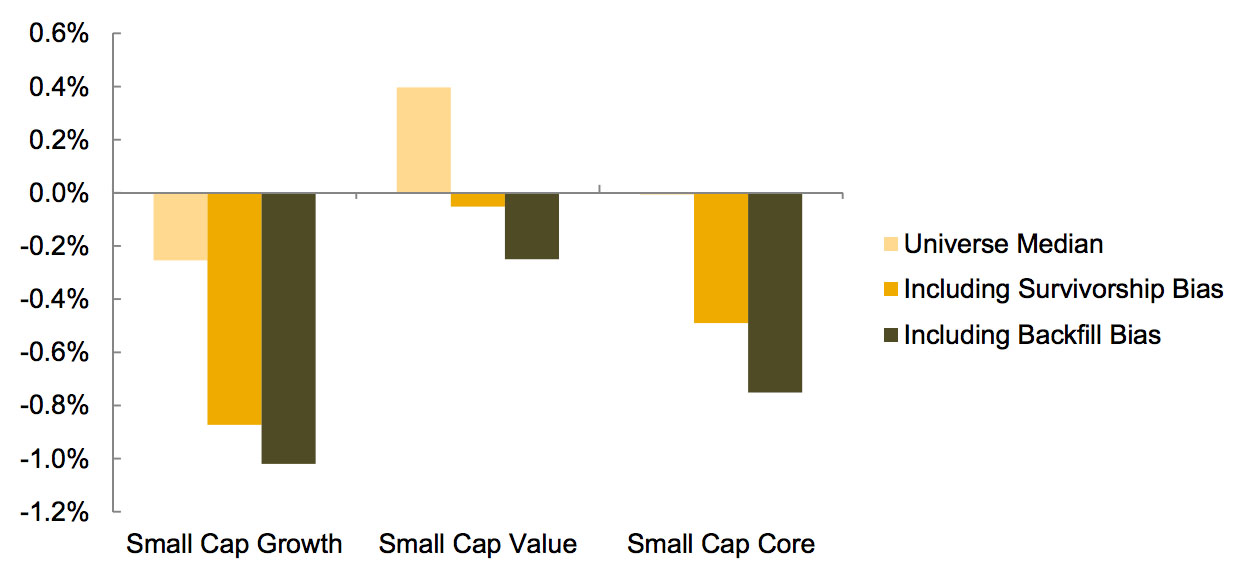Don’t believe the hype about small-cap alpha, warned Aon Hewitt.
Although investors widely assume the inefficiencies in the US small-cap equity market allows active management greater opportunities than in the large-cap market, research showed the median small-cap manager had negative excess returns over a ten-year period ending June 30, 2015.
“Active management in public equities is an exceptionally difficult endeavor, regardless of capitalization size,” the firm argued. “Investors should not be under the illusion that active management in small-cap equities is easy money.”
Using data from eVestment, Aon Hewitt examined how the median manager fared against Russell small-cap indices across three styles of small-cap investing—growth, value, and core—and compared their performance with that of top quartile managers. In all instances, managers in the top 25% performed “considerably” better than the median manager.
The firm noted that this gap between top performers and median managers emphasizes the importance of identifying managers who “truly have skill in selecting stocks and building actively managed portfolios within the small-cap space.”
“We believe high-conviction active managers have the best odds of adding value,” Aon Hewitt added.
Once database biases such as survivorship and backfilling were taken into account, excess returns dropped for even the top performing managers, with the best growth managers seeing negative alpha.
Median growth and core managers respectively lost 1% and 0.4% over the ten-year period. Only the small-cap value investor was able to produce positive alpha, although with excess returns of just 0.8%.
However, these value investors experienced negative returns when compared to benchmarks “more appropriate” than the Russell small-cap indices, while growth and core managers lost even more.
“The growth in actively managed assets within the small-cap space over the past 14 years may be significantly contributing to the lack of inefficiency that many market participants erroneously assume,” the consultant concluded.
 Net of Fees 10-Year Annualized Excess Returns Over ESM Benchmarks as of June 30, 2015. Source: Aon Hewitt’s “The Small Cap Alpha Myth Revisited”
Net of Fees 10-Year Annualized Excess Returns Over ESM Benchmarks as of June 30, 2015. Source: Aon Hewitt’s “The Small Cap Alpha Myth Revisited”
